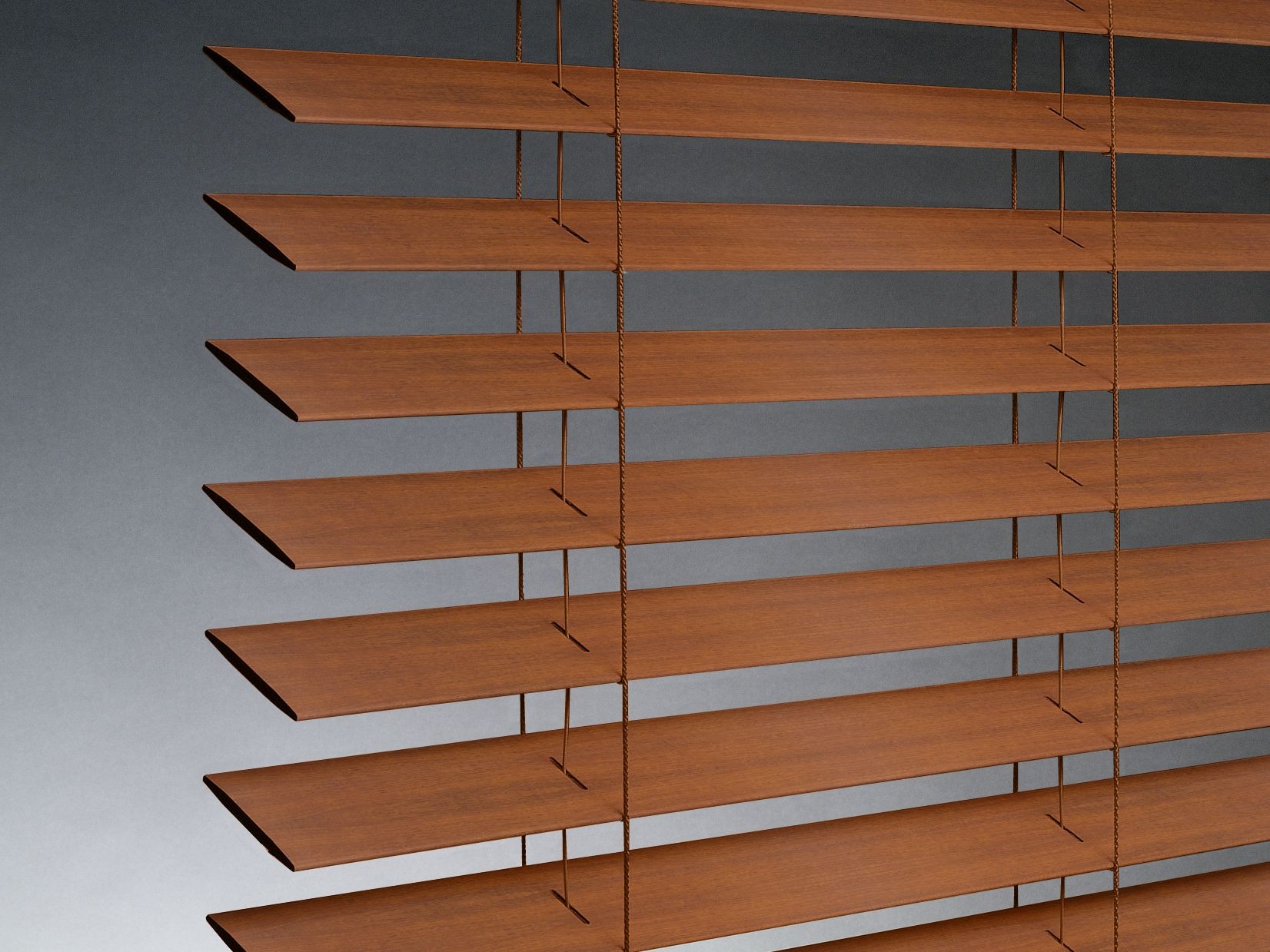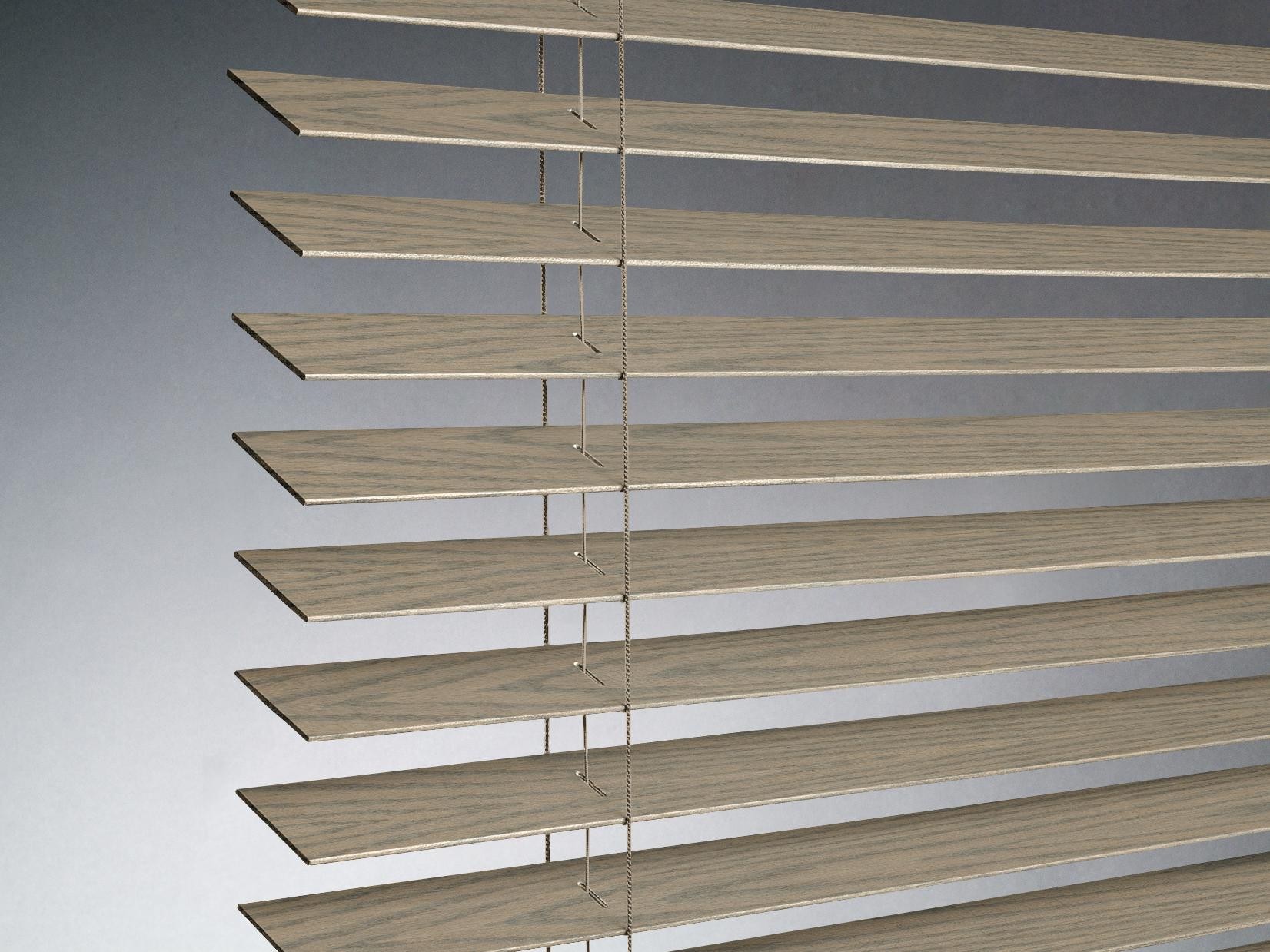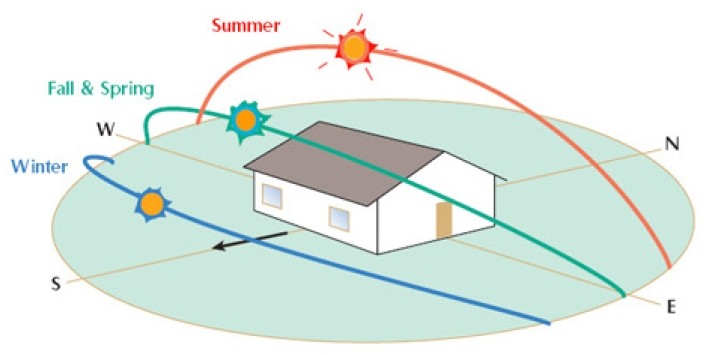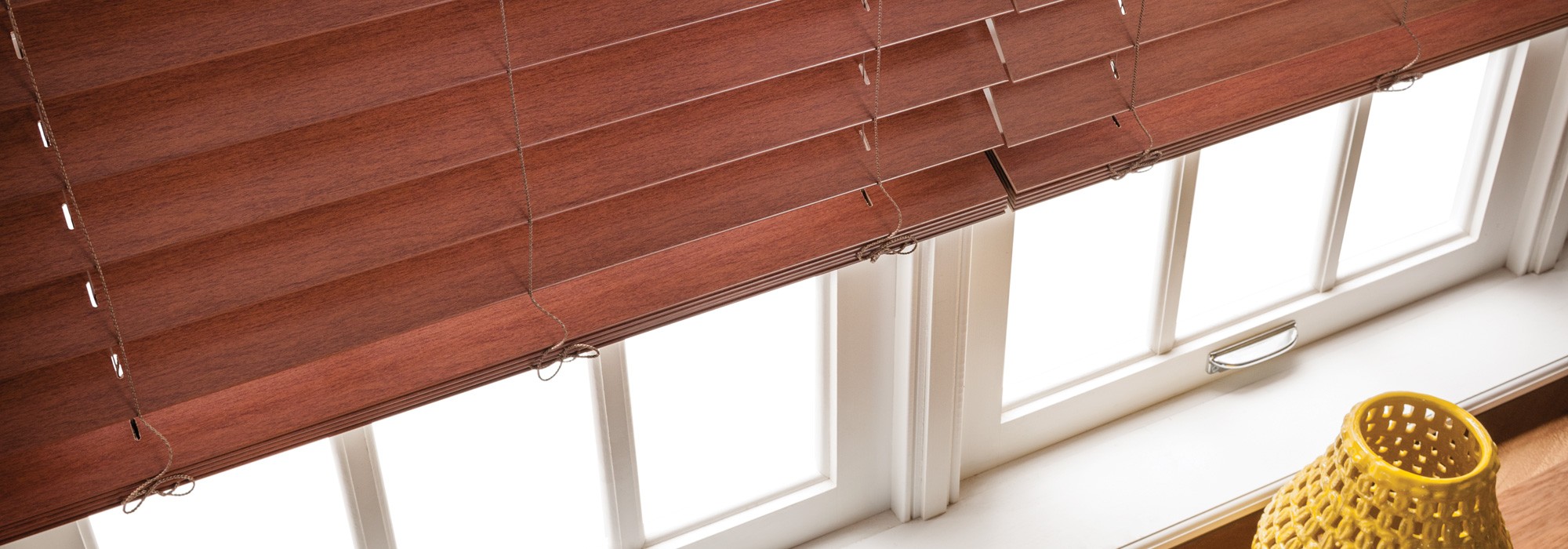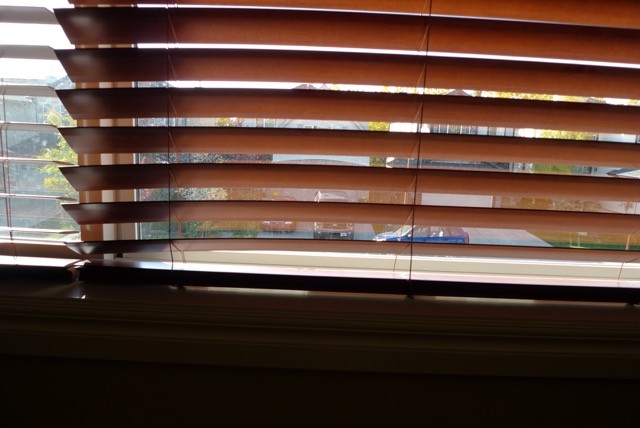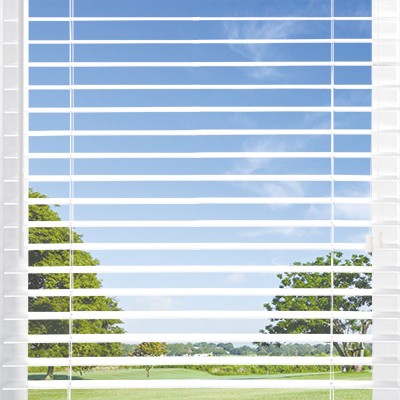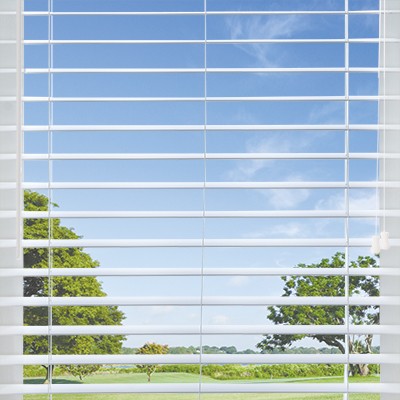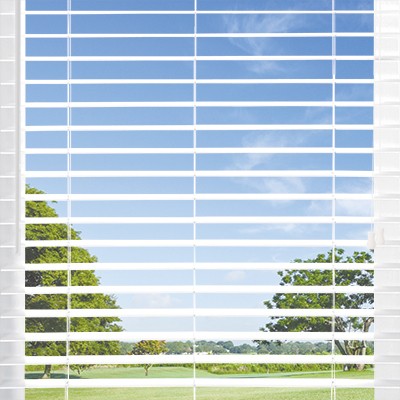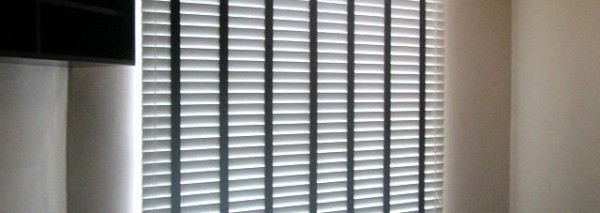Faux Wood vs Real Wood Blinds – How to choose without worrying about Warping?
Rahul Mehrotra - January 29, 2015
Are you thinking to give your window and blinds a new facelift?
You have seen blinds with wider slats and wood alike finish. You managed to find out what to call them – faux wood blind. But, then why not wood blind.
How to know which one is better: faux wood vs real wood blinds? Then, you also heard someone saying composite wood blinds.
Don’t afford warped judgment – faux wood vs real wood blinds
Whether you choose one or other, faux wood vs real wood blinds, you want blinds to stay straight. You don’t want blinds to smile or frown on you. In either case, they are warping on you, and you cannot afford that.
By staying straight, I mean blind staying straight in all-weather conditions. Usually, intense heat, during summer, is the culprit. If blind starts to warp, then you ask, “How bad this will get in time?”
Let’s start by just knowing the three main types of wood blinds that are out there.
Real Wood Blinds – As the name suggests, wood blinds use nature’s finest wood: basswood, cherry, and oak.
Composite Wood Blinds – The composition here is a mix of Poly-vinyl chloride (PVC), polystyrene, and other strengthening additives.
Faux Wood Blinds – The material is Poly-vinyl Chloride (PVC).
You say – Why are you making this complex? Words such as polystyrene and additive mean less to me.
What is more likely to warp – faux wood vs real wood blinds?
Before I answer that, let me share this with you.
One of our clients had the blinds in the home, she moved in. She moved in the wintertime. Then, sun rolled in and we get into our beautiful long summer days in Calgary. Three of her windows were facing south, and we know sunlight is strongest on the south wall. To make things worse, her TV room window faces the southwest direction, and harsh sunlight makes screens harder to see.
In case you are wondering about the sun movement during the changing seasons, you can look at the pictures below. The Sun is a lot higher in the sky in summer than in winter.
What happened to our client? Yeah, her blind was in good shape when she moved in. There were no signs of warping as you can see in the picture below.
When I met her in late September to look at her blind situation, this is what I saw. Blind slats had warped badly. Warping was so bad that you can even see it from the street level. These were faux wood blinds. I looked at the supplier/brand for the blinds, out of curiosity, and I did not see any quality brand sticker or name.
I don’t want to use supplier/brand quality as a way out of this issue. But, you and I know the differences between a good quality supplier vs. a shoddy one.
I did help her out. Faux wood blinds were not well suited for those windows. I suggested cellular style blind, and she agreed. Cellular blinds fit her needs the best. She wanted to watch the TV without any glare issues, especially during summer. Blackout cellular blinds are the best when it comes to light blocking. Heat build-up on south-facing window is high, and cellular shades are excellent in cutting down the solar heat gain.
Not everyone is willing to switch to another style of blinds or shades. You may have the blinds on other windows in the home, and you prefer to stay consistent. Or, you like the ability to tilt open and tilt close the slats.
Ok, I digressed. Let’s get back to what we were talking about – faux wood vs real wood blinds.
In my experience, there are three main design features that hold the warping back. This is where a good quality supplier stands out from the rest of the pack. If you think about it, no reputed supplier wants service related headaches.
Know these 3 things before you choose blinds
There are three main design features that you want to look out for in blinds.
What are they made of
Wood Blinds: I will say it again, natural wood blinds stand up to direct sunlight and heat better – at least in my experience doing blinds in the Calgary area. I know this is contrary to general belief out there, but I will rely on my experience.
A quality supplier will use North American hardwood or basswood for making wood blinds. Natural wood has moisture, and it goes through a multi-step drying process. Basswood is great, as it can be optimally dried without getting brittle. Wood blind is a great solution for most area windows except for high humidity spaces: washroom, kitchen sink, and laundry room windows. Moisture will have negative impacts on wood over the long-term.
Wood blinds create beauty and warmth and offer good privacy, light control and energy efficiency. They are ideal for
- Living rooms
- Dining rooms
- Bedrooms
- Family rooms
Composite Wood Blinds: What do we use here? These blinds use a mix of PVC, polystyrene, and other strengthening additives, and so the name composite.
In simple words, the core of these blinds is plastic. Then, the supplier uses some other substances, also known as additives, to make these blinds sturdy. This prevents blinds from warping. Now, you know very well that plastic has a natural tendency to warp with excessive sunshine and heat.
I had a few instances where composite wood blinds warped badly. In all those cases, it was darker color slats. What I am finding is that white or off-white color slats offer great resistance to warping. This tells me that the substance added to PVC to offer the slats wood grain-look is causing problems. The lighter color palette allows for less heat absorption.
In all those cases, our suppliers stood behind their Limited Lifetime Warranty. The blinds got replaced. The leading blind supplier/brand, Hunter Douglas, calls its line of synthetic wood blind as Alternative Wood blind. It comes with an exclusive guarantee that the blinds will not fade, warp, yellow or crack for the life of the product.
When it comes to moisture, these blinds are superb. They are easy to care and clean. You can take a moist cloth and wipe it, and moisture will have no impact on these blinds. They are superb for high humidity locations
- Kitchen
- Wash rooms
- Laundry
Faux Wood Blinds: Faux wood blinds simulate the look of wood at a budget price. The core material here is PVC. PVC is a thermoplastic used in many industries due to its high strength to weight ratio, fire resistance and durability. The disadvantage to thermoplastic is that it can soften when exposed to higher temperatures. PVC can become soft and pliable when exposed to temperatures above 55 degree Celsius.
Just like Composite wood blinds, faux wood blinds are good for high humidity areas: bathrooms, kitchen sink windows, and window areas close to the faucet.
String Spacing for blinds
You have strings, also known as ladders, which hold the slats of a blind in its place. Strings allow us to open and close the slats and raise and lower the blinds.
How many strings, across the window, are holding the slats is a good sign of the weight of the blinds. The distance between the strings is known as ladder-spacing. Wood blinds are lighter compared to other two types of blinds. So, wood blinds need less support and the ladder spacing is as wide as 24”. As a result, wood blinds offer better aesthetics; too many middle strings do not obstruct the view.
Ladder-spacing is a measure of confidence from the supplier side, as to what material width can be held straight, without warping, before the supplier needs to put next string-support. The ladder-spacing for composite wood blinds is 14” and that for faux wood blinds is 11”.
For aesthetic reasons, be it the desire to bring contrast look or accent with furniture, you can opt to put cloth-tapes over the strings. Be careful when you use the cloth tape over faux wood blinds. The spacing between cloth tape ladders will be 11”. Based on your choice of cloth fabric, the look and feel of cloth tapes over blinds may look like “Steel Bar Grillage” of a cell.
Blind Width and Installation
You have the main brackets that hold the blind. They go on the ends. There are windows with sizes, where you need one or more center supports brackets. Center support brackets are must for those sizes. The sagging of head rail at the top can lead to other problems – especially, smiling at you.
A professional installer knows the number of support brackets that he or she needs to put and where to place those brackets. End brackets can sustain so much weight and lifting effort before they start to get loose. The head rail sagging at the top will soon transfer to slats, and slats will look warped.
Here in Calgary, open concept great rooms and large size windows are high on your design list. Your desire to put one blind across the width of the large size window has to do with aesthetics. One blind offers a clean and streamlined looks with not too many cords and no visible gaps. I support that wish, but only to a certain point in width. After that point, I suggest having two or three blinds using common head rail at the top. The reasons are obvious. Slats after a certain point in width are more prone to warping. It is also heavier to operate the wide blinds as one.
Which type of blinds will you get?
So, here you go. Now, you know it all.
Will you go with Real Wood Blinds?
- You prefer the warmth of real wood. There is no match!! Many rich color choices.
- You want blinds to last longer, as the real wood blinds are lighter.
- You want the less likelihood of fading and warping from sun and heat.
- You want less visible strings, as wood blinds use minimal support strings.
- Don’t’ put them in high humidity areas.
Will you go with Composite Wood Blinds?
- You want to balance the value between aesthetics and durability.
- You want sturdier looking blinds in kid’s bedrooms and other areas, as this type of blind is heavier.
- You are not too concerned about sizes and more open to splitting the big blinds into two or three side by side blinds.
- You want good quality and stay within your budget; Composite wood blinds are less expensive.
Will you go with Faux Wood Blinds?
- You are installing blinds in high moisture areas such as kitchen sink and washroom.
- You want to mimic the look and feel of real wood without paying for it.
- You are dealing with a reputed quality supplier, and the supplier covers warping, fading and yellowing under its warranty.
- You are thinking of moving to a new home or changing windows in near future.
- Don’t get into “cheap” foam blinds that create all the mess.
I can make point after point, but you will know your choices when you see, touch, and feel these slats in your own home environment. What are you waiting for?
Now you know all the right questions to ask and I will make sure I rehearse this article before meeting with you.
Go ahead and Book our FREE In-Home Consultation.
